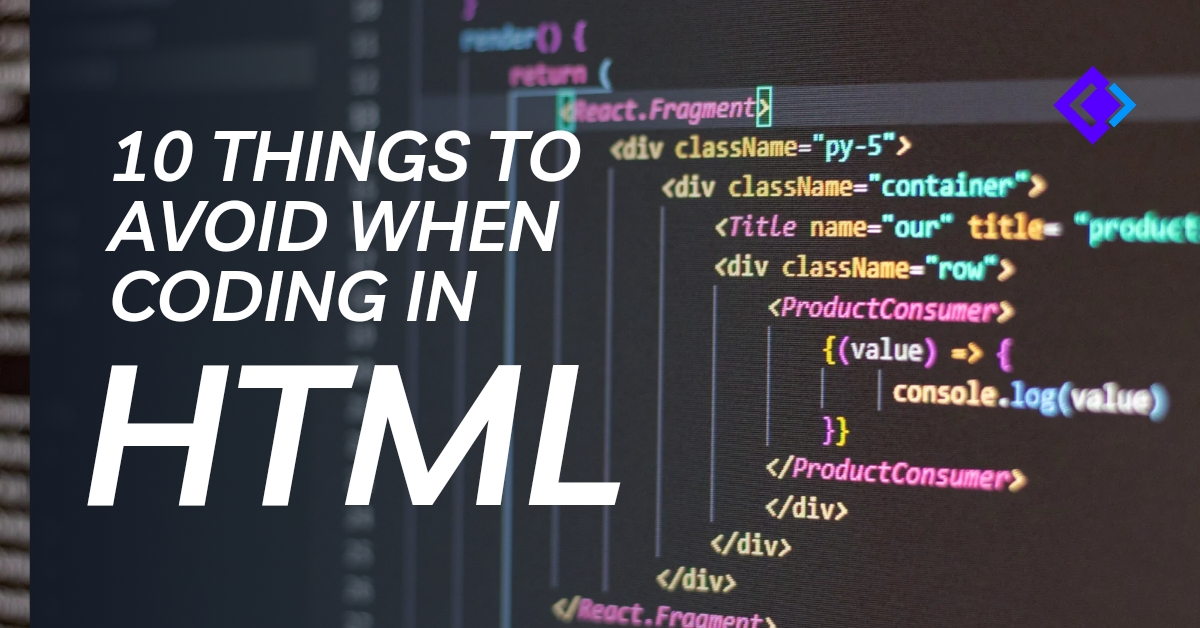HTML (Hypertext Markup Language) is the foundation of every website you see online. Whether you are a seasoned developer or starting out, it is essential to avoid common mistakes and bad habits when coding in HTML. This article will discuss ten things to avoid when coding in HTML to ensure that your web pages are functional, efficient, and accessible.
-
Avoid using deprecated HTML elements
HTML evolves with time, and certain elements that were once commonly used are now deprecated. You should avoid deprecated elements as modern web browsers no longer support them, and they may cause compatibility issues. Some deprecated elements include <font>, <center>, and <strike>. Instead, use modern HTML and CSS to achieve the same effects.
-
Avoid using inline styles when coding in HTML
Inline styles are CSS styles that are added to HTML tags using the style attribute. While inline styles may seem quick and easy, people generally frown upon them as they make maintaining and updating your code harder. Using external style sheets or embedded styles is recommended to separate your presentation from your content and make your code more organized.
-
Avoid using tables for layout
In the early days of the web, tables were commonly used for layout purposes. However, this is no longer the case, as tables are meant for tabular data, not page layout. Tables can also make your web pages less accessible for users with disabilities and negatively affect your website’s performance. Instead, use modern layout techniques like Flexbox and CSS Grid.
-
Avoid using non-semantic markup
HTML has semantic elements that describe the meaning of the content, such as <header>, <nav>, and <section>. Using semantic markup not only makes your code more readable and maintainable but also improves accessibility and SEO. Avoid using generic elements like <div> or <span> for everything, and use the appropriate semantic element for the content.
-
Avoid using outdated HTML attributes
Modern web browsers no longer support some HTML attributes, similar to deprecated HTML elements. Attributes like <font>, <center>, and <bgcolor> should be avoided. Instead, use modern HTML and CSS to achieve the same effects.
-
When Coding in HTML, Avoid using uppercase tags
While HTML tags are not case-sensitive, we recommend using lowercase tags for consistency and readability. Using uppercase tags can also lead to errors and make your code harder to maintain.
-
Avoid using empty tags
HTML tags are meant to have content inside them, but empty tags like <img> and <br> are exceptions. However, it is essential to avoid using empty tags for non-semantic purposes. Instead, use CSS to achieve the same effects and use semantic HTML tags where appropriate.
-
Avoid using excessive nesting while coding in HTML
Nesting is the practice of placing HTML tags inside other HTML tags. While nesting is necessary for some situations, excessive nesting can make your code harder to read and maintain. It can also negatively affect your website’s performance. Try to keep your nesting to a minimum, and use indentation and white space to improve readability.
-
Avoid using too many <div> elements
While <div> elements are useful for grouping content, using too many can lead to unnecessary nesting and make your code harder to read. Instead, try to use semantic HTML elements to group your content and use CSS to style them as needed.
-
Avoid using outdated or unsupported browser-specific features
Using some browser-specific features and CSS properties may be tempting, but they do not have support from all web browsers and can cause compatibility issues. It is essential to test your web pages across different browsers and devices to ensure that they are working as intended. Avoid using browser-specific features and stick to standard HTML and CSS.
In conclusion, these ten things to avoid when coding in HTML are essential for creating functional, efficient, and accessible web pages. By avoiding deprecated elements, inline styles, tables for layout, non-semantic markup, outdated HTML attributes, uppercase tags, empty tags, excessive nesting, too many <div> elements, and obsolete or unsupported browser-specific features, you can improve your coding skills and create web pages that are easy to maintain and update. With these best practices in mind, you can create web pages that are not only functional but also aesthetically pleasing and user-friendly, helping to improve the user experience and increase the chances of your website being successful.

Leave a Reply